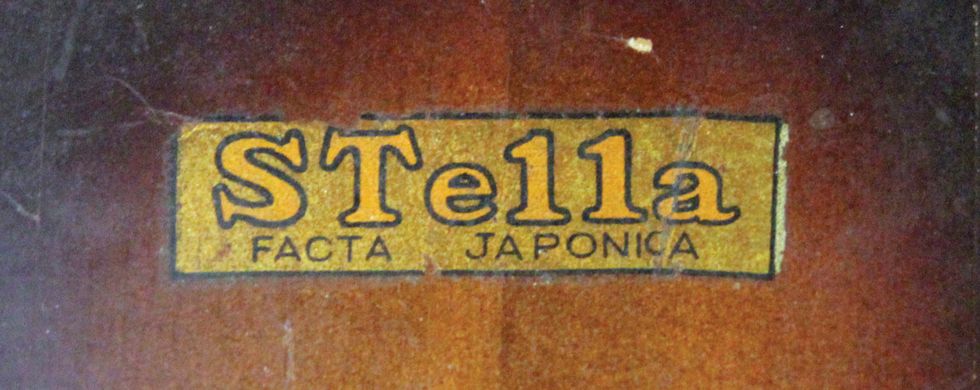I’ve wanted to share a story about Stella electrics for a while now, but after having one completely overhauled, I realize this tale will require two episodes. For starters, we’ll focus on the short-lived but crazy world of Japanese Stella guitars. Now, I don’t know what sparked the “Stella” brand name, but I can think of three distinctly different uses: There were Soviet-era guitars that carried the name, and then, of course, there were American-made Stella guitars. But hardly anyone understood the origins of the strange Japanese iterations we’ll be exploring.
The only person I’ve ever met who has knowledge of these Stella guitars is the legendary Yukichi Iwase, who worked for Teisco in the early days and later went on to create his own Voice-branded instruments. Back in the ’40s, ’50s, and ’60s, when Iwase worked for Teisco, the factory was located in the Furukawa-Bashi area of Tokyo. That neighborhood is notable because Guyatone was within walking distance of Teisco, and this made it the epicenter for electric guitar production in Japan at that time. The two companies seemed to have a healthy competition, which allowed them to share ideas, employees, and guitar components.
For instance, the bodies for Teisco and Guyatone guitars were made by a subcontractor named Mr. Tosaka, who basically used a bandsaw to cut and shape almost every guitar for both companies. And then the pickups for both companies shared similar coils, pots, and wiring. Early Guyatone guitars went for a Valco-like design theme, and early Teisco guitars went for a Harmony look.
But then there were these “other” guitars from the same era that bore the Stella brand. These instruments seemed to share the same bodies and electronics as the other Tokyo-made electrics, yet they were somehow … weirder. And dig this: I’ve rarely seen two Stella guitars that looked the same—seriously! Some have six-on-a-side tuners, while others have three-on-a-side tuners. Some Stellas have intricate pickup surrounds. Others sport thumbscrew pickup adjusters or reverse headstocks, or have oddly shaped bodies.
Just compare the two Stellas in Photo 1 (top) and Photo 2 (bottom). Okay, the headstock, fretboard markers, bridge, and tailpiece appear to resemble each other, but that’s where the similarities end. One thing all these Stella electrics have in common: They’re extremely rare and typically found in the U.S.
What makes these Stella electrics even more wacky is the logo (Photo 3). Facta Japonica? I mean, a Latin phrase on a 1950s Japanese guitar? It even appears to be spelled STe11a with two numerals subbing for the two “l” letters. So strange!
For many years the prevailing theory was that these oddities were re-branded Guyatones, but thankfully Iwase remembered these guitars and the small Kurosawa factory nearby in Tokyo. This factory produced only solidbody electric guitars for a few years, likely from 1958 to 1961. Then Kurosawa also made some early hollowbody models that were among the first Japanese electrics to feature humbucker-sized pickups. The designers at Kurosawa certainly had some interesting ideas and flair, but as I was soon to discover, the Stella solidbody electrics have a major design flaw that becomes very pronounced with the passage of time. Next month I’ll detail the major surgery required to get one of these into playable condition.




















